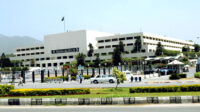Let’s be clear, the United States and China have time and again made it clear that despite soaring tensions between them, business will continue as usual, and the much-awaited bilateral meeting between US President Joe Biden and Chinese President Xi Jinping in San Francisco on the sidelines of the Asia-Pacific Economic Cooperation (APEC) is yet another example of that.
The carefully planned four-hour meeting between President Biden and President Xi sought to send a message to the world that everything is stable and smooth between the two countries while they have kept every other country on tenterhooks since 2018 with the onset of a “trade war” between them.
As China became more and more aggressive, the US also ratcheted up its trade issues with Beijing but the reality is that business has continued between the two, unabated. China continues to remain one of the largest export markets for US goods and services, and the United States is among the top export markets for China.
US goods and services trade with China totaled an estimated $758.4 billion in 2022. Exports were $195.5 billion and imports were $562.9 billion. The US goods and services trade deficit with China was $367.4 billion in 2022, according to the Office of the United States Trade Representative (USTR) data.
Yet, during the meeting with Xi, Biden said in no uncertain terms that the US and China are “competitors” even as he reaffirmed Washington’s ‘One China’ policy on the issue of Taiwan. Yes, Biden did call Xi a “dictator” during a press conference afterwards but in the same breath he also said “we made progress”.
And, most importantly, Biden made it crystal clear that the US and China are resuming military-to-military contacts because “that’s how accidents happen, misunderstandings… So, we’re back to direct, open, clear, direct communications on a direct basis. Vital miscalculations on either side can cause real, real trouble.”






